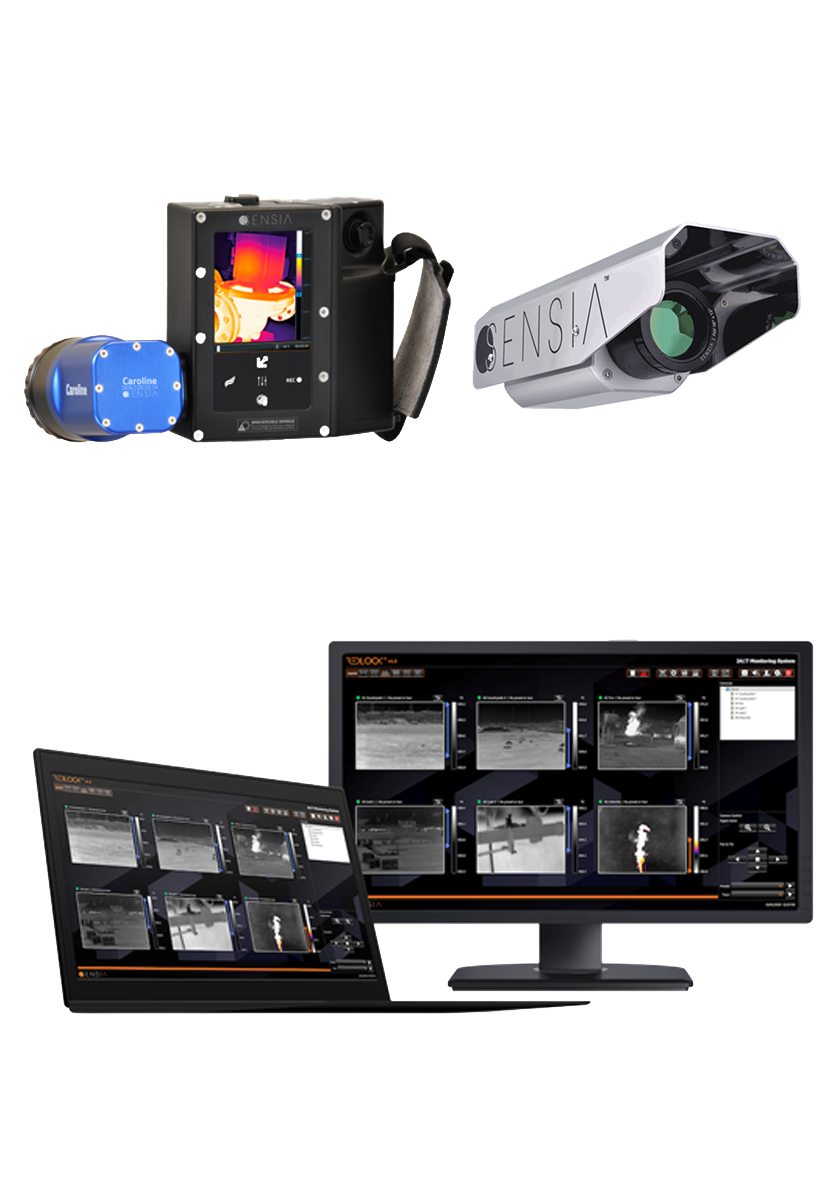Innovations in Emissions Monitoring
The global drive to reduce carbon footprints has spurred significant advancements in emissions monitoring technologies. These innovations are essential for ensuring compliance with environmental regulations, optimising operational efficiency, and mitigating the environmental impact of industrial activities. Leading energy companies are at the forefront of these technological advancements, providing state-of-the-art solutions that are transforming the energy sector.
One crucial area of development is Leak Detection and Repair (LDAR) programmes. These programmes play a vital role in identifying and mitigating methane leaks, which are potent greenhouse gases. For instance, ExxonMobil has implemented LDAR programmes using advanced technologies such as infrared cameras and mobile analytical devices. These tools enable precise detection and localisation of leaks, facilitating timely repairs and minimising emissions. By preventing product loss and ensuring regulatory compliance, LDAR programmes not only reduce environmental footprints but also enhance operational efficiency and safety. Advanced LDAR systems can reduce methane emissions by up to 90%, significantly impacting overall greenhouse gas reductions.
Continuous monitoring technologies are another essential component for real-time surveillance of industrial facilities. Chevron, for example, has adopted continuous monitoring systems that provide 24/7 data transmission, enabling immediate response to potential emission leaks. These systems help maintain system integrity and optimise performance, ensuring compliance with stringent environmental regulations. Continuous monitoring involves using fixed and portable sensors, drones, and satellite technology to provide comprehensive data on emissions, allowing for swift action and better regulatory compliance.

Optical Gas Imaging (OGI) is a pivotal technology for detecting and quantifying hydrocarbon gas leaks that are invisible to the naked eye. BP employs high-resolution OGI cameras to visualise and address fugitive emissions, ensuring early detection and mitigation of gas leaks. This technology significantly reduces environmental impact and enhances operational safety by preventing potential hazards associated with undetected gas emissions. OGI cameras are particularly effective in identifying leaks in difficult-to-access areas, thereby improving overall emissions management.
Intelligent thermography involves using thermal imaging solutions to monitor equipment performance and detect issues that could lead to increased emissions. Shell has integrated thermal imaging into its monitoring processes to provide early warning systems that detect abnormal emission levels, allowing for swift mitigation strategies. This technology is also used in flame and flare monitoring to ensure efficient and compliant operations, reducing wasteful emissions and optimising energy production. Thermal imaging can detect temperature anomalies, which are often precursors to leaks or equipment failures, thus preventing environmental incidents before they occur.
Accurate emissions quantification and data analysis are critical for managing and reducing greenhouse gas emissions. Companies like TotalEnergies utilise comprehensive emissions quantification services, leveraging technologies such as LDAR and advanced data analysis tools to provide precise measurements of emissions. Custom reporting formats adhere to local and international environmental standards, ensuring transparent disclosure and compliance.
The integration of these advanced emissions monitoring technologies has a profound impact on reducing carbon footprints globally. By ensuring early detection and prompt repair of leaks, continuous monitoring, and advanced imaging, energy companies like Chevron, ExxonMobil, and BP maintain regulatory compliance, enhance operational efficiency, and significantly cut down on greenhouse gas emissions. These technologies not only foster a cleaner environment but also support sustainable energy production and operational transparency.
The commitment to innovation and sustainability in emissions monitoring technologies is crucial for achieving environmental excellence and operational efficiency. These advanced technologies are paving the path for a greener and more sustainable future, helping to mitigate the effects of climate change and promoting a cleaner, healthier environment.
Innovations in Emissions Monitoring
The global drive to reduce carbon footprints has spurred significant advancements in emissions monitoring technologies. These innovations are essential for ensuring compliance with environmental regulations, optimising operational efficiency, and mitigating the environmental impact of industrial activities. Leading energy companies are at the forefront of these technological advancements, providing state-of-the-art solutions that are transforming the energy sector.
One crucial area of development is Leak Detection and Repair (LDAR) programmes. These programmes play a vital role in identifying and mitigating methane leaks, which are potent greenhouse gases. For instance, ExxonMobil has implemented LDAR programmes using advanced technologies such as infrared cameras and mobile analytical devices. These tools enable precise detection and localisation of leaks, facilitating timely repairs and minimising emissions. By preventing product loss and ensuring regulatory compliance, LDAR programmes not only reduce environmental footprints but also enhance operational efficiency and safety. Advanced LDAR systems can reduce methane emissions by up to 90%, significantly impacting overall greenhouse gas reductions.
Continuous monitoring technologies are another essential component for real-time surveillance of industrial facilities. Chevron, for example, has adopted continuous monitoring systems that provide 24/7 data transmission, enabling immediate response to potential emission leaks. These systems help maintain system integrity and optimise performance, ensuring compliance with stringent environmental regulations. Continuous monitoring involves using fixed and portable sensors, drones, and satellite technology to provide comprehensive data on emissions, allowing for swift action and better regulatory compliance.

Optical Gas Imaging (OGI) is a pivotal technology for detecting and quantifying hydrocarbon gas leaks that are invisible to the naked eye. BP employs high-resolution OGI cameras to visualise and address fugitive emissions, ensuring early detection and mitigation of gas leaks. This technology significantly reduces environmental impact and enhances operational safety by preventing potential hazards associated with undetected gas emissions. OGI cameras are particularly effective in identifying leaks in difficult-to-access areas, thereby improving overall emissions management.
Intelligent thermography involves using thermal imaging solutions to monitor equipment performance and detect issues that could lead to increased emissions. Shell has integrated thermal imaging into its monitoring processes to provide early warning systems that detect abnormal emission levels, allowing for swift mitigation strategies. This technology is also used in flame and flare monitoring to ensure efficient and compliant operations, reducing wasteful emissions and optimising energy production. Thermal imaging can detect temperature anomalies, which are often precursors to leaks or equipment failures, thus preventing environmental incidents before they occur.
Accurate emissions quantification and data analysis are critical for managing and reducing greenhouse gas emissions. Companies like TotalEnergies utilise comprehensive emissions quantification services, leveraging technologies such as LDAR and advanced data analysis tools to provide precise measurements of emissions. Custom reporting formats adhere to local and international environmental standards, ensuring transparent disclosure and compliance.
The integration of these advanced emissions monitoring technologies has a profound impact on reducing carbon footprints globally. By ensuring early detection and prompt repair of leaks, continuous monitoring, and advanced imaging, energy companies like Chevron, ExxonMobil, and BP maintain regulatory compliance, enhance operational efficiency, and significantly cut down on greenhouse gas emissions. These technologies not only foster a cleaner environment but also support sustainable energy production and operational transparency.
The commitment to innovation and sustainability in emissions monitoring technologies is crucial for achieving environmental excellence and operational efficiency. These advanced technologies are paving the path for a greener and more sustainable future, helping to mitigate the effects of climate change and promoting a cleaner, healthier environment.





